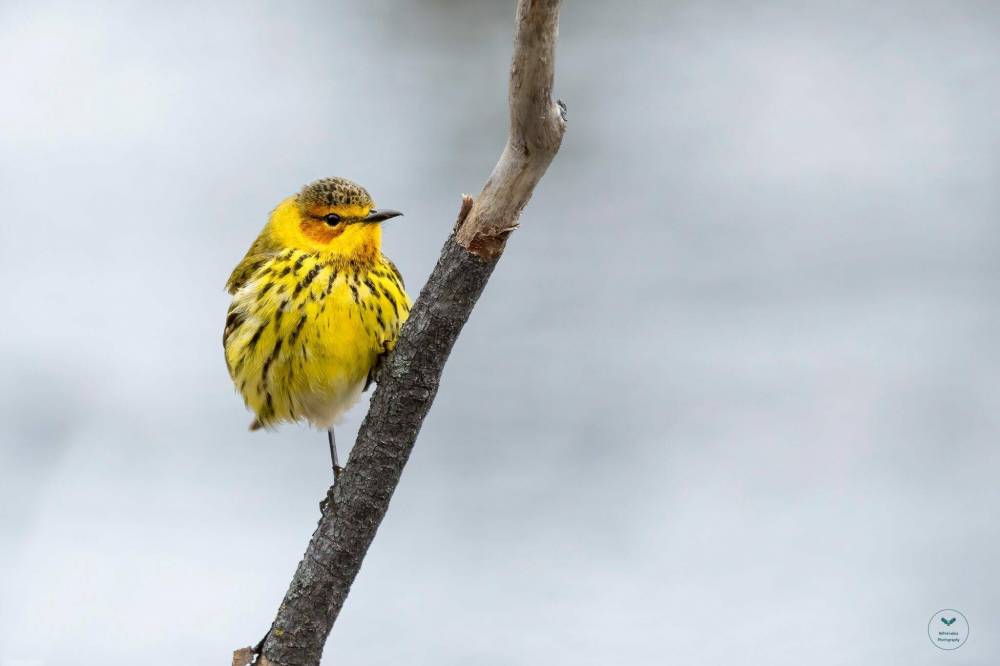Birders snap spring migration
Advertisement
Hey there, time traveller!
This article was published 25/05/2022 (1261 days ago), so information in it may no longer be current.
You may have seen them perched at Assiniboine Park or FortWhyte Alive, binoculars pressed to their brows or cameras gripped and poised to shoot.
They’re the common Winnipeg birdwatcher, and with the springtime influx of birds travelling along the Mississippi flyway, a migration route connecting South America to the Arctic by way of Manitoba, these benevolent hunters are on the prowl to capture all the colours and variations their avian friends have to offer.
Appropriately, the birdwatcher has variations of its own. There is the classic birder, checking birds they’ve spotted off their “life list” one by one. Then there is the house birder, who sets up feeders to watch from their windows and struggles to decide whether or not to chase off those pesky grackles bullying other birds away. Perhaps most common these days is the bird photographer, revelling in the challenge of getting crisp shots of the flighty creatures.

Woodhaven resident Walter Potrebka’s taxonomy falls somewhere between bird photographer and classic birder, with a heavy lean toward the former. He teaches bird photography classes at FortWhyte Alive in spring (classes are sold out this year), and in winter, he conducts tours for great grey and snowy owls. But he also keeps a life list, catalogued by species, without which he would’ve never known he saw his first Cape May warbler this spring.
“When you put in the time to research, and you’ve waited hours for the bird to appear, and you actually capture the shot you envision — it’s quite an exhilarating experience,” he said.
Before seeking out a bird, Potrebka takes the time to consider multiple factors. Which lens is best suited for this bird or that; which camera settings will prevent flapping wings from blurring; and of course, where can the bird be found?
“If you’re looking for a barred owl, for example, you would be looking for certain types of terrains. You’d be looking for forest near a water source, usually,” he said.
But in spring, the targets are usually smaller birds, such as warblers with their blush of yellow feathers.
While there’s another migration to come in fall, spring birding has an advantage.
“You can photograph before the leaves come out. Otherwise, you can’t find them in the trees,” he said. “And everything comes through in a very short period of time, so it’s quite hectic.”
Birding is also about connection — to nature and community.

“When you’re out in the field, it makes you slow down and look a little bit harder and listen a little bit harder to what’s happening around you,” he said. “We definitely become more attuned to what’s happening.”
Once a shot is captured, many birders post them in online groups to ask for help identifying a bird or simply to share their photos.
River Heights’ Kane Gin (bird photographer) recently snapped a palm warbler a split second before it gobbled up a bug above the surface of a pond at Assiniboine Park.
“I could never have planned that, because I was far enough away you couldn’t see the bug,” he said. “Serendipity.”
It’s shots like this or Potrebka’s favourites of burrowing owls that reveal something of the lesson birding seems to teach: some treasures demand close attention; they fly quickly and are easily missed.

Cody Sellar
Cody Sellar was a reporter/photographer for the Free Press Community Review.
Our newsroom depends on a growing audience of readers to power our journalism. If you are not a paid reader, please consider becoming a subscriber.
Our newsroom depends on its audience of readers to power our journalism. Thank you for your support.




